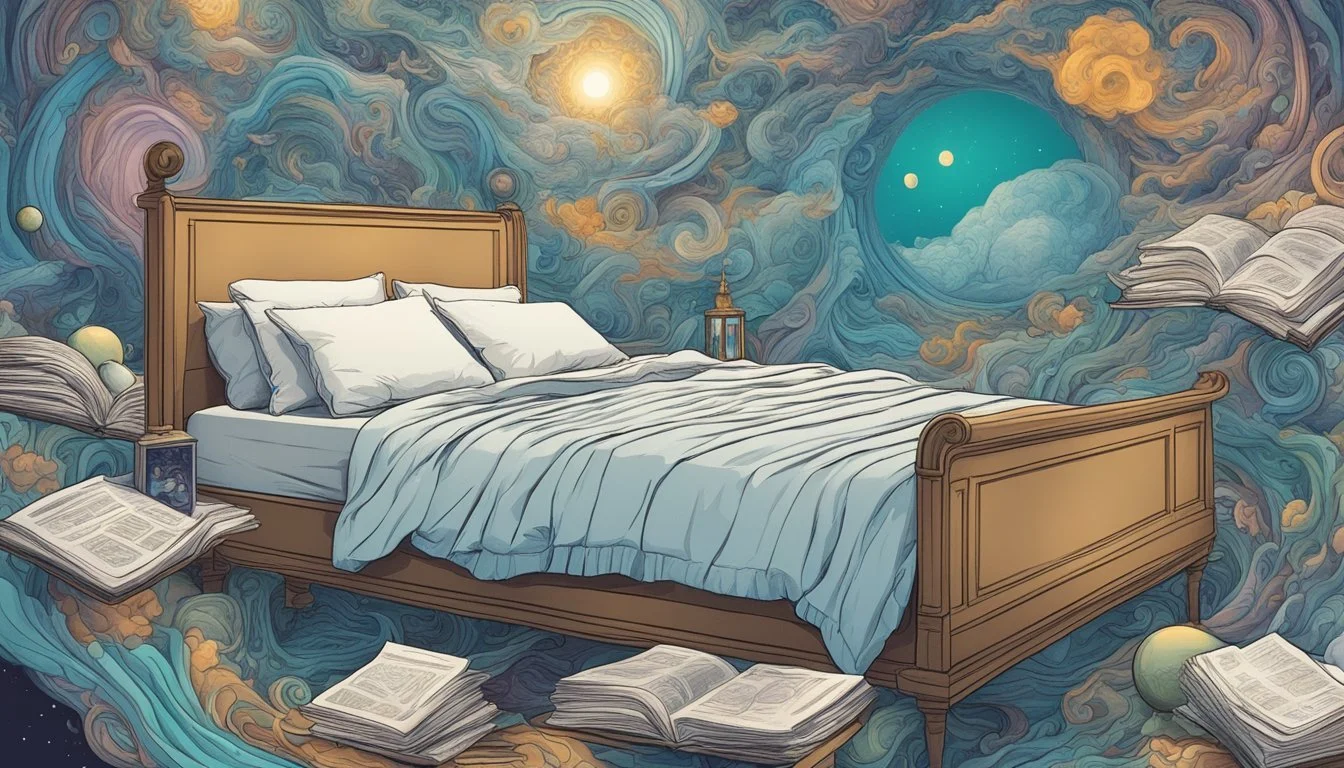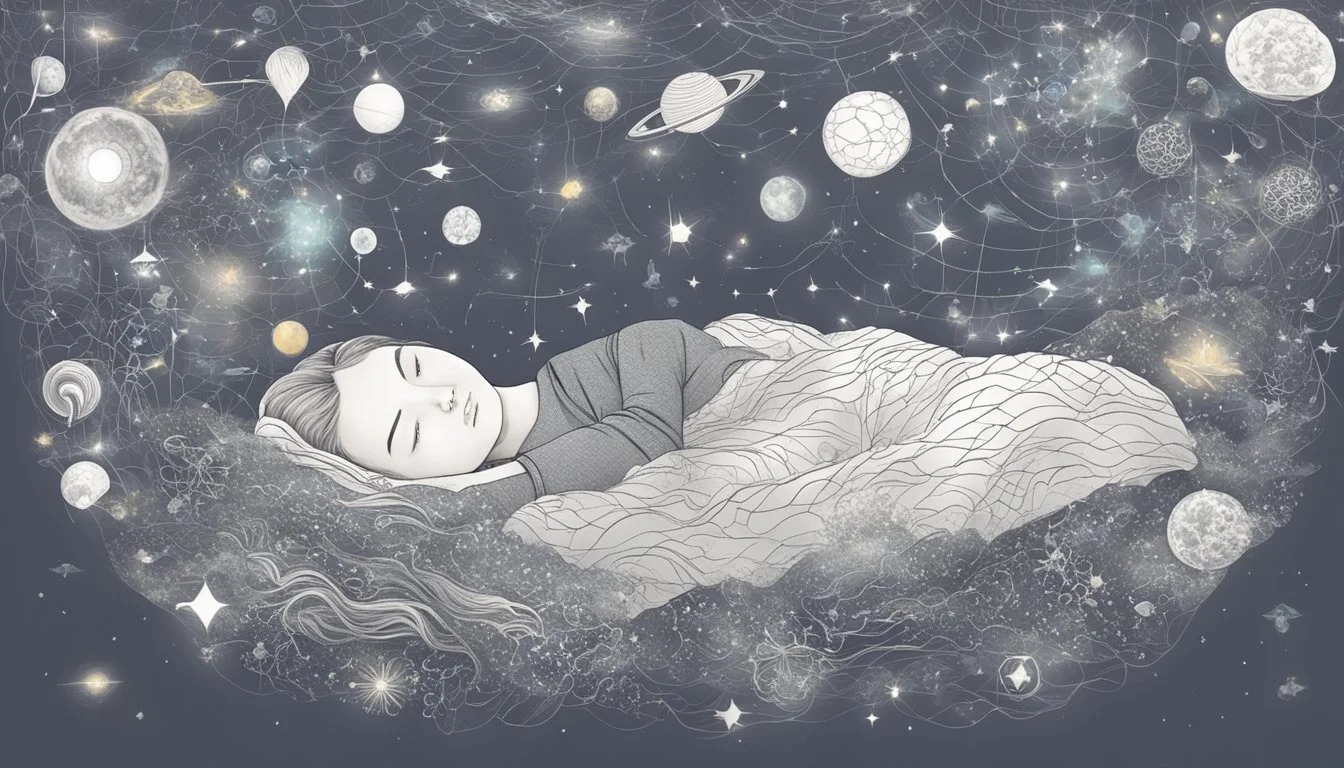6 Documentaries That Explore the Science of Lucid Dreaming
Unlocking the Secrets of Conscious Sleep
Lucid dreaming fascinates many people with its promise of conscious control within the dream world. This unique state of awareness during sleep has captured the imagination of researchers, filmmakers, and dreamers alike. Documentaries exploring the science behind lucid dreaming offer viewers a chance to delve deeper into this mysterious realm of human consciousness.
Several compelling documentaries examine the techniques, potential benefits, and scientific understanding of lucid dreaming. These films often feature interviews with experts in psychology, neuroscience, and sleep research, as well as firsthand accounts from experienced lucid dreamers. By blending scientific insights with personal stories, these documentaries provide a well-rounded look at the current state of lucid dream research and practice.
1) Waking Life
"Waking Life" is a groundbreaking animated film directed by Richard Linklater that explores the realm of lucid dreaming. Released in 2001, this unique documentary-style movie blends philosophy, science, and surrealism.
The film follows a young man as he navigates through a series of dream-like encounters and conversations. These interactions delve into various topics, including consciousness, free will, and the nature of reality.
Linklater employs rotoscope animation techniques to create a fluid, dreamlike visual style. This artistic choice perfectly complements the film's themes and enhances the viewer's sense of being in a lucid dream state.
"Waking Life" stands out for its thought-provoking discussions on the science of dreaming. It features appearances by dream researchers and sleep scientists who share insights into the mechanics of lucid dreaming.
The film's innovative approach to storytelling and its exploration of lucid dreaming have made it a cult classic. It continues to inspire viewers to question the boundaries between waking life and the dream world.
[https://en.wikipedia.org/wiki/Waking_Life]
2) Inception
Christopher Nolan's mind-bending thriller "Inception" explores the intricacies of lucid dreaming and dream manipulation. The film follows a team of skilled dream infiltrators led by Dom Cobb, portrayed by Leonardo DiCaprio.
In the movie, characters use advanced technology to enter and manipulate others' dreams. This concept draws inspiration from real-world research on lucid dreaming, where individuals become aware they are dreaming and can exert some control over the dream environment.
The film's depiction of shared dreaming and multi-layered dream states pushes the boundaries of current scientific understanding. However, it sparked widespread interest in the nature of dreams and consciousness.
"Inception" also touches on themes of memory, reality perception, and the power of ideas. Its complex narrative and stunning visuals have made it a cultural touchstone for discussions about dreams and the subconscious mind.
The movie's exploration of dream architecture and manipulation has inspired further research and public interest in the science of dreaming and consciousness.
3) Dreams: Cinema of the Subconscious
"Dreams: Cinema of the Subconscious" offers viewers a behind-the-scenes look at Christopher Nolan's film "Inception." This documentary explores the scientific research and complex ideas that influenced the movie's portrayal of the dream world.
Joseph Gordon-Levitt hosts the film, guiding audiences through insights into dream research. He is joined by leading scientists and psychologists who share their expertise on the subject.
The documentary delves into questions about the nature of dreams and their potential as a parallel reality. It examines cutting-edge dream research, providing a scientific context for the concepts presented in "Inception."
Directed by Roko Belic, this film bridges the gap between entertainment and education. It offers viewers a deeper understanding of the science behind dreaming while exploring the creative process of filmmaking.
"Dreams: Cinema of the Subconscious" serves as both a companion piece to "Inception" and a standalone exploration of dream science. It invites audiences to consider the possibilities of the subconscious mind.
https://www.imdb.com/title/tt1686778/
4) The Nightmare
The Nightmare is a thought-provoking documentary that delves into the unsettling world of sleep paralysis. Directed by Rodney Ascher, this film explores the experiences of eight individuals who suffer from this sleep disorder.
Sleep paralysis is a condition where people find themselves unable to move or speak upon waking or falling asleep. The documentary showcases vivid reenactments of the subjects' terrifying hallucinations and encounters with shadowy figures.
Ascher's film blends interviews with atmospheric recreations, creating a haunting atmosphere that mirrors the subjects' experiences. It offers insights into the psychological and cultural aspects of sleep paralysis, examining how different societies interpret these phenomena.
The Nightmare provides a unique perspective on the intersection of dreams, nightmares, and reality. It challenges viewers to consider the nature of consciousness and the power of the human mind during sleep.
More information about The Nightmare on IMDb
5) The Endless
"The Endless" is a thought-provoking science fiction film that delves into the realm of lucid dreaming and alternate realities. Directed by Justin Benson and Aaron Moorhead, the movie follows two brothers who return to a UFO death cult they escaped years ago.
As the story unfolds, the characters experience time loops and reality distortions that blur the line between dreams and waking life. The film explores the concept of being trapped in a recurring dream-like state, unable to distinguish between reality and illusion.
"The Endless" challenges viewers to question the nature of consciousness and the potential for multiple realities. Its intricate plot and mind-bending visuals offer a unique perspective on lucid dreaming and its implications for our understanding of reality.
While not a traditional documentary, the film's exploration of these themes makes it a valuable addition to discussions about lucid dreaming in cinema. It prompts viewers to consider the possibilities and dangers of becoming stuck in a dream-like state.
[https://www.imdb.com/title/tt3986820/]
6) The Mind's Eye
"The Mind's Eye" explores the fascinating world of lucid dreaming through a scientific lens. This documentary delves into the neurological aspects of dream awareness and control.
The film features interviews with leading sleep researchers and neuroscientists. They discuss the brain activity associated with lucid dreaming and its potential implications for understanding consciousness.
Viewers are introduced to various techniques used to induce lucid dreams. These methods are explained in detail, along with their scientific basis and effectiveness.
The documentary also examines the potential therapeutic applications of lucid dreaming. It showcases studies on using this phenomenon to treat nightmares and enhance problem-solving skills.
Throughout the film, captivating visuals illustrate the complex concepts discussed. These animations help viewers grasp the intricate workings of the brain during lucid dreams.
"The Mind's Eye" offers a balanced perspective on lucid dreaming research. It presents both the promising findings and the challenges faced by scientists in this field.
The Science Behind Lucid Dreaming
Lucid dreaming involves a unique state of consciousness where the dreamer becomes aware they are dreaming. This phenomenon has intrigued researchers, leading to scientific investigations into its neurological underpinnings and characteristics.
Neurological Basis of Lucid Dreaming
Brain imaging studies have revealed increased activity in specific regions during lucid dreams. The dorsolateral prefrontal cortex, associated with self-awareness and decision-making, shows heightened activation.
Bilateral frontopolar prefrontal cortex activity also increases, potentially enabling metacognition within the dream state. The precuneus, linked to self-reflection and consciousness, demonstrates enhanced functioning.
These neural patterns suggest lucid dreaming involves a partial activation of waking brain networks while maintaining the dream state. This hybrid activation allows for conscious awareness and potential dream control.
Differences Between Lucid and Non-Lucid Dreams
Lucid dreams exhibit distinct characteristics compared to typical dreams. Dream content in lucid states tends to be more vivid and memorable. Dreamers often report enhanced sensory experiences and emotional intensity.
Brain activity patterns differ significantly. Non-lucid dreams show reduced activity in areas responsible for logical reasoning and self-awareness. In contrast, lucid dreams maintain activation in these regions.
Cognitive abilities also vary. Lucid dreamers can often perform complex tasks, make conscious decisions, and even solve problems within the dream environment. This level of cognitive control is typically absent in non-lucid dreams.
Techniques and Practices
Lucid dreaming can be cultivated through specific methods and mindful practices. These approaches aim to increase dream awareness and improve one's ability to recognize and control dream states.
Common Methods to Induce Lucid Dreams
Reality checks serve as a cornerstone technique for lucid dreaming. Practitioners regularly question their waking reality, which can carry over into dreams. Common reality checks include:
Attempting to push a finger through the palm
Checking digital clocks or text for stability
Trying to breathe while pinching the nose
The Wake Back to Bed (WBTB) method involves waking up during REM sleep and staying awake briefly before returning to sleep. This technique often leads to increased dream recall and lucidity.
Mnemonic Induction of Lucid Dreams (MILD) focuses on setting intentions before sleep. Dreamers repeat phrases like "I will remember I'm dreaming" to reinforce awareness.
Mindfulness and Dream Awareness
Dream journaling enhances dream recall and recognition of dream signs. Keeping a detailed record helps identify recurring themes or elements that may signal a dream state.
Meditation practices can sharpen awareness and concentration, skills that transfer to dream states. Regular mindfulness exercises improve the ability to maintain consciousness during dreams.
Some enthusiasts use supplements like vitamin B6 or galantamine to enhance dream vividness and recall. However, it's crucial to consult a healthcare professional before trying any supplements.
Visual and auditory cues, such as flashing lights or specific sounds, can be used as external triggers for lucidity. These cues are designed to be noticed by the dreamer without causing awakening.







